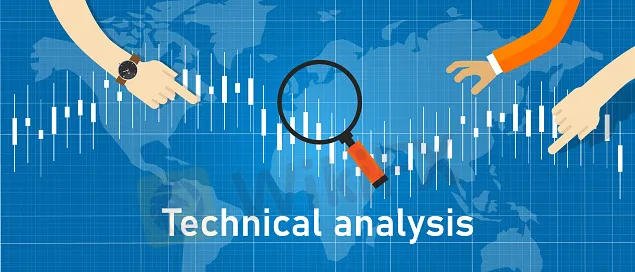WikiFX report: Technical Analysis
Sommario:Technical analysis is especially important in trading Forex to be able to forecast movements of the market, given its high volatility.

The Importance of Technical Analysis in Forex and CFDs
Those trading in the foreign exchange market (forex) rely on the same two basic forms of analysis that are used in the stock market: fundamental analysis and technical analysis. The uses of technical analysis in forex are much the same: the price is assumed to reflect all news, and the charts are the objects of analysis. Investors have thousands of opportunities to trade assets online, and to become successful investors traders must identify trends and be able to predict the future value of financial assets.
The purpose of technical analysis is to help the investor make a more financially sound investment decision. Also The importance of Forex and CFD technical analysis is crucial to help streamline these decisions and determine the optimal trades that meet the overall goals.
In fact, technical analysis is especially important in trading Forex to be able to forecast movements of the market, given its high volatility.
Technical analysis
Some traders consider themselves to be “technical traders”. They rely on the price movement patterns and technical tools in their analysis and dont pay much heed to the economic news flow. The only thing that matters, according to them, is the price of the currency/financial asset. Other things are just distractors.
Technical analysis in Forex and stock trading
Technical analysis is the same for Forex and stock trading. A trader typically opens the chart and follows the price action to predict where the price will move next. He/she often uses different technical tools to recognize trends and trend reversals and also tries to identify some chart patterns. These tools are based on mathematical formulas, but traders dont need to get into them as they are graphically represented for simplicity. When some technical indicators become a favorite for a trader, he/she can start creating his own investment strategy! To know more about technical analysis, you can read other technical analysis book. The analysis is based on three basic premises; these assumptions are:
• The price reflects the overall stability of an asset; there are many elements that affect the market and these are reflected in the share price. Mainly supply and demand is causing this rise or fall in prices. As a technical analyst, you should not care about the factors causing changes, but limit your analysis to the consequences
• Prices move in trends; this is pretty straightforward; prices always move in trends, upward and downward, depending on the circumstances that occur in each moment in the markets. The purpose of technical analysis is to define the trends, and prepare to start your trades in that direction.
• History repeats itself; certain trends in the markets tend to reoccur again and again. It really comes in handy to perform comparisons and examine the past behavior of an asset before deciding what to do with your investment, depending on that assets history.
With this pattern of analysis, a trader will use market trends to predict price movements of an asset in the future. The purpose of this technique is to estimate the present value of the asset, but to determine patterns in the fluctuation of prices, which helps predict future activity. Understanding these models allows traders to identify potential changes in the value of assets, giving them a good indication of the upward or downward trend in the price of the asset. Its also important to note that technical analysis is performed the same no matter what underlying asset you are looking at.
Utilizing Technical Indicators
Many forex traders spend their time looking for that perfect moment to enter the markets or a telltale sign that screams “buy” or “sell.” Technical indicators are defined by different mathematical variables and are distinguished into four families based on the information that is desired. They allow you to view real-time changes in the price of a given asset and assess market psychology related asset.
Trend indicators: These types of indicators allow the trader to see at-a-glance the tendency of a real-time asset.
The momentum indicators: These indicators are powerful tools to help appreciate the strength of a current trend.
The supports and resistances: These indicators are calculated directly from the highest levels and lower active level and generally allow rules to define the target price.
Volatility Indicators: These inform the trader whether the course is in a range and if the asset is trading in a narrow price zone or if the asset is in full rush in a given trend.
Online traders quickly learn in order to make more accurate predictions and minimize risk, the importance of technical analysis for CFDs and Forex is a crucial component in their cache of tools.
Both fundamental and technical analysis have their advantages and drawbacks, so its best to combine these 2 methods. This way you will get the fullest view of what is happening at the market. While trading on the intraday use technical analysis first to determine the state of the market, trade entry and exit levels. Then use fundamental analysis to adjust your strategy taking into account events of the economic calendar. In the longer-term trade firstly determine the trend with the help of fundamental analysis and then look for an entry and exit point using technical analysis tools.
WikiFX Trader
FXTM
TMGM
EC Markets
FXCM
Pepperstone
HFM
FXTM
TMGM
EC Markets
FXCM
Pepperstone
HFM
WikiFX Trader
FXTM
TMGM
EC Markets
FXCM
Pepperstone
HFM
FXTM
TMGM
EC Markets
FXCM
Pepperstone
HFM
Rate Calc

